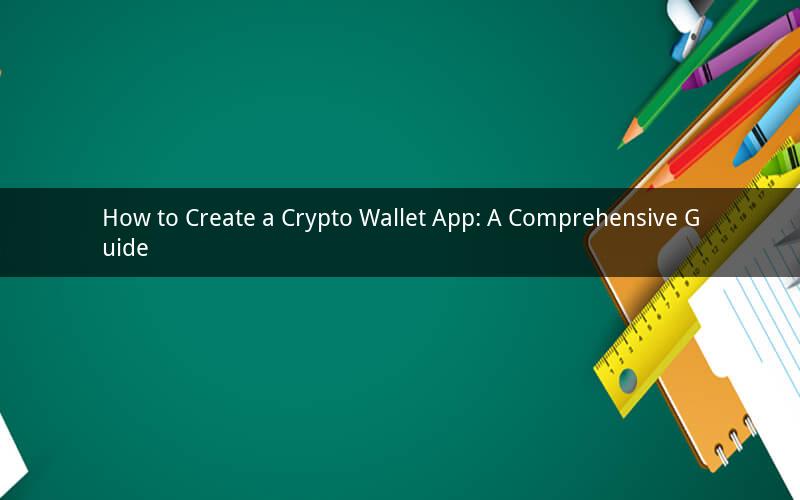
Creating a crypto wallet app is a significant step in the rapidly evolving world of cryptocurrency. With the increasing popularity of digital currencies, there is a growing demand for secure and user-friendly wallet solutions. This guide will provide you with a comprehensive overview of the process involved in creating a crypto wallet app, from concept to launch.
1. Understanding the Basics of Crypto Wallets
Before diving into the development process, it is crucial to have a clear understanding of what a crypto wallet is and how it functions. A crypto wallet is a software program that allows users to store, send, and receive digital currencies. There are two main types of wallets: hot wallets and cold wallets. Hot wallets are connected to the internet and are more convenient for daily transactions, while cold wallets are offline and offer enhanced security.
2. Identifying the Target Audience
To create a successful crypto wallet app, it is essential to identify your target audience. Consider factors such as age, location, and familiarity with cryptocurrencies. Understanding your audience will help you tailor the app's features and design to their needs and preferences.
3. Researching the Market
Before starting the development process, conduct thorough market research to identify the gaps and opportunities in the crypto wallet market. Analyze existing wallet apps and identify their strengths and weaknesses. This research will help you make informed decisions about the features and functionalities of your app.
4. Choosing the Right Technology Stack
Selecting the appropriate technology stack is crucial for the success of your crypto wallet app. Here are some key components to consider:
- Programming Language: Choose a programming language that is well-suited for mobile app development, such as Swift for iOS or Kotlin for Android.
- Blockchain Platform: Decide on the blockchain platform you want to integrate, such as Ethereum, Bitcoin, or Binance Smart Chain.
- Cryptocurrency Support: Determine which cryptocurrencies you want to support in your wallet app.
- Security: Prioritize security features, such as encryption, multi-factor authentication, and cold storage solutions.
5. Designing the User Interface (UI) and User Experience (UX)
A user-friendly and intuitive interface is essential for the success of your crypto wallet app. Focus on creating a seamless and pleasant user experience by following these guidelines:
- Keep the design simple and straightforward.
- Use clear and concise language.
- Ensure the app is accessible to users of all skill levels.
- Implement responsive design to ensure compatibility across various devices.
6. Developing the App
Once you have a clear understanding of the technology stack and design, it's time to start developing the app. Here are some key steps to follow:
- Set up the development environment.
- Develop the core functionalities, such as account creation, transaction processing, and wallet management.
- Implement security features, such as encryption and multi-factor authentication.
- Test the app thoroughly to ensure its functionality and performance.
7. Launching the App
After completing the development and testing phase, it's time to launch your crypto wallet app. Here are some steps to consider:
- Choose a suitable app store for distribution, such as the Apple App Store or Google Play Store.
- Optimize your app for search engines to increase visibility.
- Create a marketing plan to promote your app and attract users.
8. Post-Launch Activities
Once your app is live, it's essential to monitor its performance and gather user feedback. Here are some post-launch activities to consider:
- Collect user feedback to identify areas for improvement.
- Regularly update the app to fix bugs and add new features.
- Implement a customer support system to address user concerns.
Frequently Asked Questions:
1. What are the main differences between hot and cold wallets?
Answer: Hot wallets are connected to the internet and are more convenient for daily transactions, while cold wallets are offline and offer enhanced security.
2. Which programming language is best for developing a crypto wallet app?
Answer: Swift is a popular choice for iOS apps, while Kotlin is well-suited for Android apps.
3. How can I ensure the security of my crypto wallet app?
Answer: Implement encryption, multi-factor authentication, and cold storage solutions to enhance security.
4. What are some essential features to include in a crypto wallet app?
Answer: Essential features include account creation, transaction processing, wallet management, and security features.
5. How can I promote my crypto wallet app to attract users?
Answer: Optimize your app for search engines, create a marketing plan, and engage with your target audience on social media.